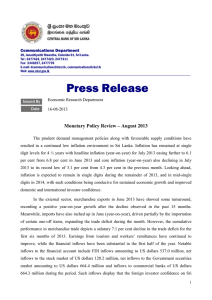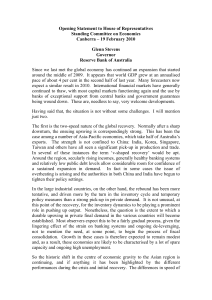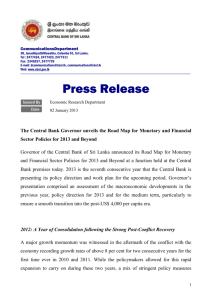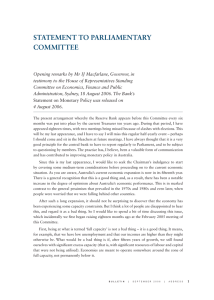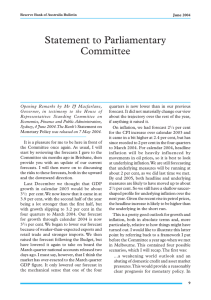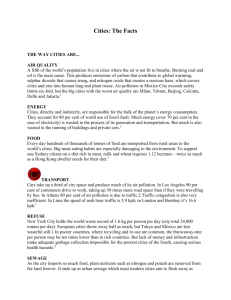Monetary Policy Review, September 2013
advertisement
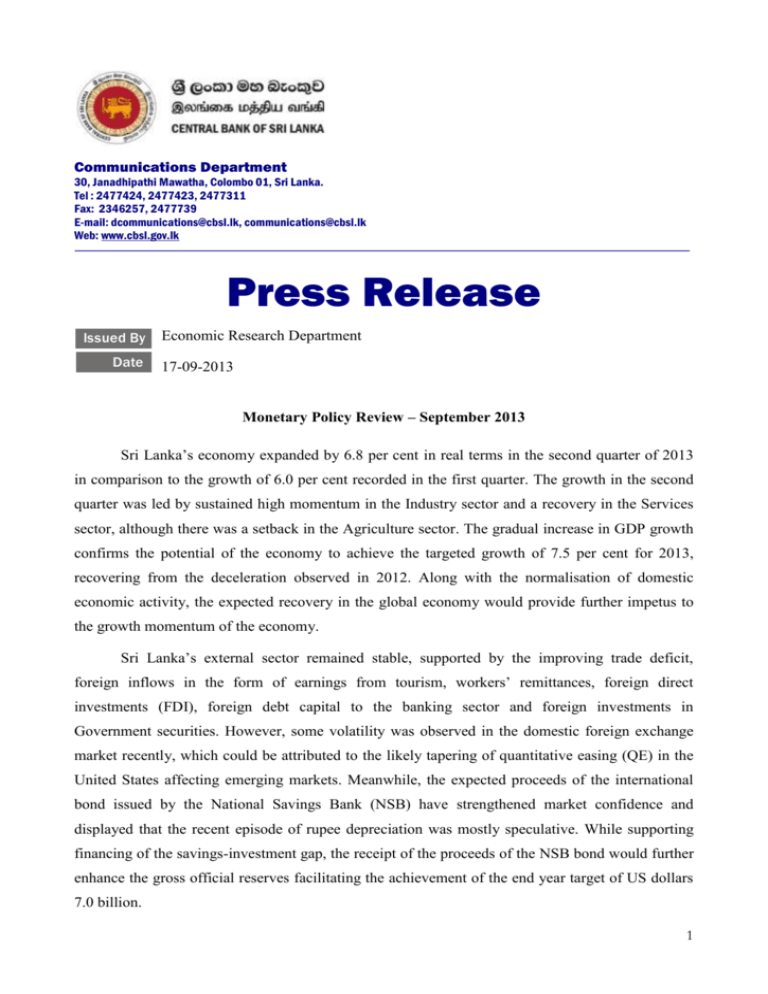
Communications Department 30, Janadhipathi Mawatha, Colombo 01, Sri Lanka. Tel : 2477424, 2477423, 2477311 Fax: 2346257, 2477739 E-mail: dcommunications@cbsl.lk, communications@cbsl.lk Web: www.cbsl.gov.lk Press Release Issued By Date Economic Research Department 17-09-2013 12-12-2012 Monetary Policy Review – September 2013 Sri Lanka’s economy expanded by 6.8 per cent in real terms in the second quarter of 2013 in comparison to the growth of 6.0 per cent recorded in the first quarter. The growth in the second quarter was led by sustained high momentum in the Industry sector and a recovery in the Services sector, although there was a setback in the Agriculture sector. The gradual increase in GDP growth confirms the potential of the economy to achieve the targeted growth of 7.5 per cent for 2013, recovering from the deceleration observed in 2012. Along with the normalisation of domestic economic activity, the expected recovery in the global economy would provide further impetus to the growth momentum of the economy. Sri Lanka’s external sector remained stable, supported by the improving trade deficit, foreign inflows in the form of earnings from tourism, workers’ remittances, foreign direct investments (FDI), foreign debt capital to the banking sector and foreign investments in Government securities. However, some volatility was observed in the domestic foreign exchange market recently, which could be attributed to the likely tapering of quantitative easing (QE) in the United States affecting emerging markets. Meanwhile, the expected proceeds of the international bond issued by the National Savings Bank (NSB) have strengthened market confidence and displayed that the recent episode of rupee depreciation was mostly speculative. While supporting financing of the savings-investment gap, the receipt of the proceeds of the NSB bond would further enhance the gross official reserves facilitating the achievement of the end year target of US dollars 7.0 billion. 1 The reduction in the Central Bank’s policy rates in May 2013 followed by the reduction in the SRR in July have eased conditions in the domestic credit markets, thereby bringing down market interest rates. The downward movement of short term interest rates has begun to permeate to interest rates of longer term loans and this trend is expected to gather momentum over the coming months, further reducing the borrowing costs of economic agents. Benefitted by these developments, credit extended to the private sector by commercial banks, in absolute terms increased by Rs. 28.5 billion in July 2013, although on a year-on-year basis, credit growth decelerated to 8.4 per cent in July compared to 8.9 per cent in June, due to the base effect. Reflecting the expansion of credit to both the private and the public sectors, broad money (M2b) growth in July was 16.4 per cent, higher than the average monetary expansion of 15 per cent targeted for 2013. Continued fiscal consolidation efforts by the government and greater financial discipline of public corporations are expected to reduce the public sector’s reliance on banks, thereby passing the benefit of monetary easing to the private sector. With regard to inflation, the outlook continues to remain favourable. So far during the year, inflation has benefitted from the absence of upward pressures from international commodity prices and increased domestic food supplies along with favourable weather conditions and subdued demand pressures. Accordingly, inflation, as measured by the year-on-year change in the Colombo Consumers’ Price Index (2006/07=100), increased marginally to 6.3 per cent in August from 6.1 per cent in the previous month, while core inflation remained unchanged from the previous month at 3.1 per cent. Taking into account the developments discussed above, the Monetary Board at its meeting held on 16th September 2013, was of the view that the current monetary policy stance is appropriate, and accordingly, decided to maintain the Repurchase rate and the Reverse Repurchase rate of the Central Bank of Sri Lanka at their current levels of 7.00 per cent and 9.00 per cent, respectively. The date for the release of the next regular statement on monetary policy would be announced in due course. 2
